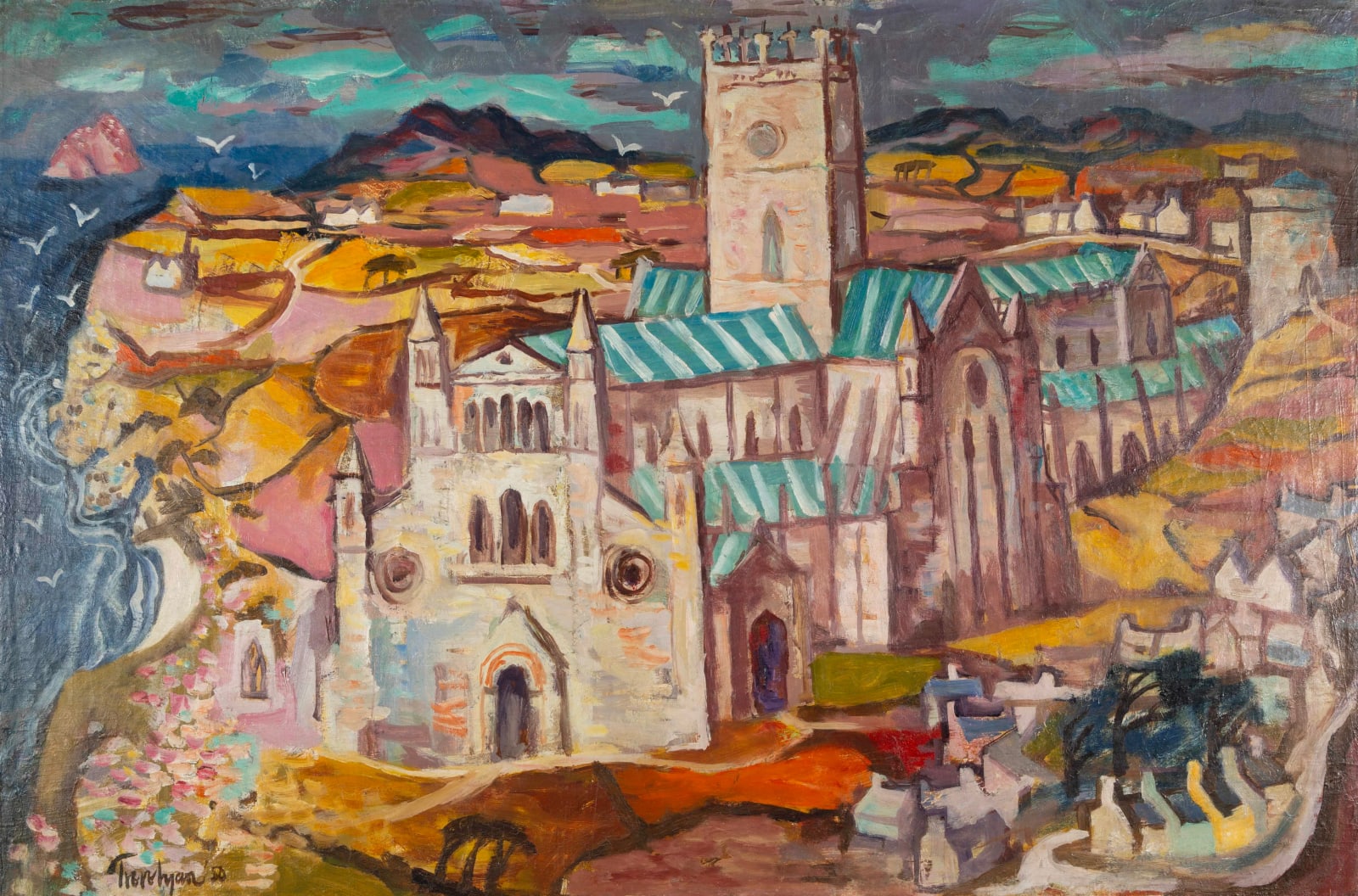Julian Trevelyan 1910-1988
St Davids, 1950
oil on canvas
65 x 91 cm (framed measurements)
65 x 91 cm (framed measurements)
50.8 x 76.2 cm
20 x 30 in
20 x 30 in
signed and dated
St David's in Pembrokeshire is the smallest city in the UK. Its clustered medieval buildings and cathedral (dating in part to the 12th Century) are nestled into the coastal terrain...
St David's in Pembrokeshire is the smallest city in the UK. Its clustered medieval buildings and cathedral (dating in part to the 12th Century) are nestled into the coastal terrain of rugged cliffs, rolling hills and wild seas. Despite its modest scale St David's holds great spiritual and historical significance. Throughout the medieval period, it was an important pilgrimage site. In 'St David's' Trevelyan successfully captures the majesty of this ancient cathedral city through his modernist visual vocabulary. Viewed from above, the medieval architecture, rolling landscape and clustered houses are rendered in a carefully composed patchwork of earthy tones and geometric shapes. There is a timeless quality to the scene which has been distilled into its essential rhythms: the weight of the stone, the curve of the hills and the arrangements of the dwellings. Trevelyan shows here a fascination with the interplay between architecture and the natural surroundings of the coastal scenery.
Philip Trevelyan notes, 'This picture was painted in the year after Julian Trevelyan and Mary Fedden started living and working together. It is painted in a manner that he had found (and which worked for him) back in the late 30’s. The view of the church and landscape appear to be viewed from the air, and as a camouflage officer during the 1939-45 war, Julian had spent a lot of time on his stomach viewing landscapes through the floor an aeroplane. The picture was recently found in the painting rack at Durham Wharf and has not previously been on the open market' (Private correspondence, 2025).
Philip Trevelyan notes, 'This picture was painted in the year after Julian Trevelyan and Mary Fedden started living and working together. It is painted in a manner that he had found (and which worked for him) back in the late 30’s. The view of the church and landscape appear to be viewed from the air, and as a camouflage officer during the 1939-45 war, Julian had spent a lot of time on his stomach viewing landscapes through the floor an aeroplane. The picture was recently found in the painting rack at Durham Wharf and has not previously been on the open market' (Private correspondence, 2025).
Provenance
Estate of the ArtistJoin Our Mailing List
We won't spam you. We will send a monthly email highlighting new artworks and events, with very occasional other mailings.
* denotes required fields
In order to respond to your enquiry, we will process the personal data you have supplied in accordance with our privacy policy. You can unsubscribe or change your preferences at any time by clicking the link in any emails.



